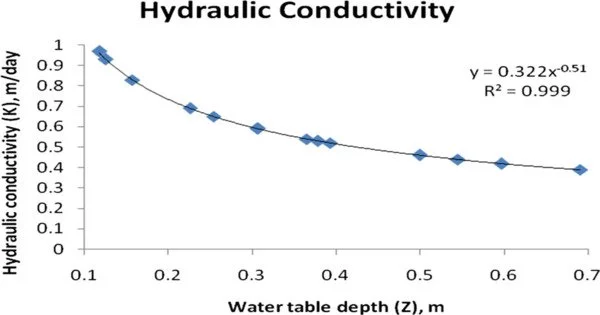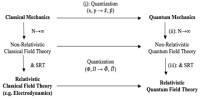Hydraulic conductivity (K, in SI units of meters per second) is a property of porous materials, soils, and rocks that characterizes the ease with which a fluid (typically water) may travel through the pore space or fracture network. It is a crucial characteristic in hydrogeology and soil science. It is determined by the inherent permeability (k, unit: m2) of the material, the degree of saturation, and the density and viscosity of the fluid. It assesses the ability of a porous substance, such as soil or rock, to transfer water through it.
This feature is important in understanding how groundwater moves through the subsurface and is used in a variety of environmental and technical applications, such as groundwater flow models, groundwater supply assessments, and contaminant transport studies.
Ksat, or saturated hydraulic conductivity, defines the movement of water across saturated material. Hydraulic conductivity is defined as the volume flux to hydraulic gradient ratio, which provides a quantitative assessment of a saturated soil’s ability to transport water when subjected to a hydraulic gradient.
Hydraulic conductivity depends on several factors, including:
- Porosity: The volume fraction of void space (pore space) within a material is defined as porosity. Because they give more paths for water to move through, materials with high porosity often have better hydraulic conductivity.
- Grain Size Distribution: The arrangement and size of the grains or particles in the porous medium are crucial. In general, coarse-grained materials (e.g., sand and gravel) have better hydraulic conductivity than fine-grained materials (e.g., clay) with small, tightly packed pores.
- Fluid Properties: It is also affected by the fluid characteristics (often water). The viscosity of the fluid, for example, can affect how easily it flows through the porous media.
- Pressure Gradient: It is typically measured under the influence of a pressure gradient. The steeper the pressure gradient, the higher the rate of flow through the medium, assuming all other factors remain constant.
- Temperature: Temperature can influence the viscosity of the fluid and, in turn, affect hydraulic conductivity.
Hydraulic conductivity is generally stated in velocity units (e.g., meters per second or centimeters per second) and can range from very low values in clays to high values in coarse sands and gravels. It is frequently determined using laboratory testing or inferred through field observations, and it can vary greatly even within the same geological formation.
Hydraulic conductivity is important in many hydrogeological applications, including well design, groundwater contamination assessment, groundwater flow modeling, and understanding fluid movement in the subsurface. It is a key criterion for managing water resources and protecting the environment.
















